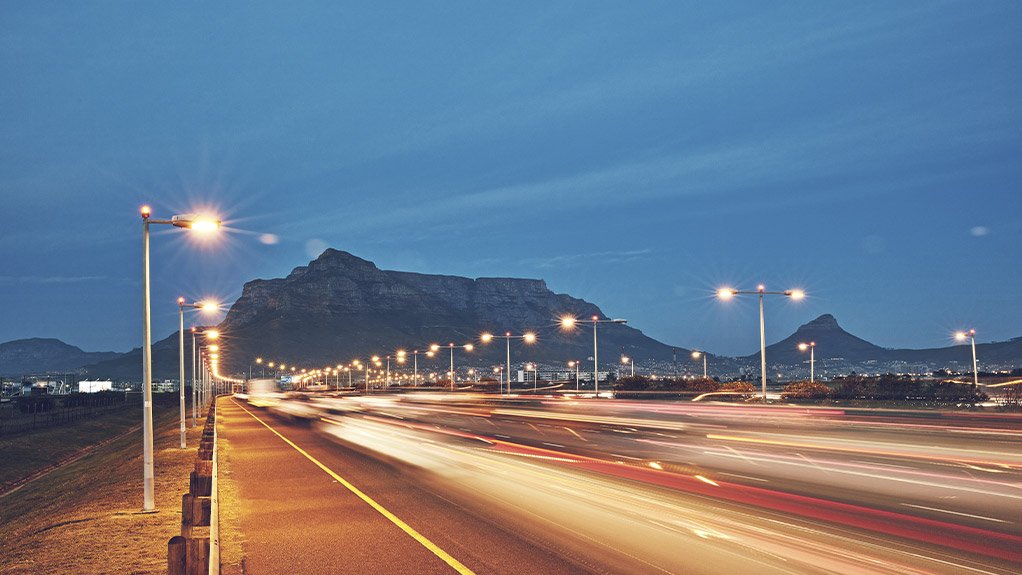Think smart—travel fast
This article has been supplied.
By Siveshni Pillay
When Smart Mobility comes to a street near you
When you walk out of your home, whether it's an apartment in Johannesburg Central or an RDP home in the peri-urban areas, you are on a journey. And regardless of whether you are taking your car to work or walking around the corner to the spaza shop, you are a traveller, a part of a larger ecosystem encompassing vehicles and pedestrians.
Considerable design, engineering and construction efforts have gone into making this possible, but not all of it is visible and not all of it is obvious. When travelling along a busy street, who thinks of the complex drainage systems installed beneath the pavements or the street lighting above to keep roads safe?
Smarter and more efficient travel
Thinking of transport only in terms of engineering is like thinking of food only in terms of calories. Smart thinking about transport is about mobility (like smart thinking about food is about nutrition). Smart mobility recognises that your travel is not simply about cars or buses, or even your ability to walk or cycle. Smart mobility is about using innovative and practical solutions that enable travellers to get from A to B and C — in a smarter, more efficient manner whilst still being safe.
Historically, traffic congestion was often addressed with engineering solutions like building new highways and widening roads. Smart mobility aims to develop a sustainable transportation system by holistically merging technology, policies and infrastructure. It seeks to improve traditional engineering methods by optimising existing resources and promoting mobility in an environmentally, economically and socially sustainable manner while meeting the needs of all "travellers"
A holistic view to optimising transport
Smart mobility aims to enhance transportation for all travellers by optimising traffic flow and improving public transport through the use of technology. This includes creating roads and paths suitable for electric and self-driving cars, pedestrians and cyclists. Additionally, smart mobility promotes cleaner transportation by utilising renewable energy sources and reducing pollution.
Accessibility and affordability for all
Ensuring accessibility and affordability of transportation for all individuals is a key priority. The overall objective is to create a transportation system that fosters economic growth while being cost-effective for both the government and the public. In a sense, technology allows us to apply ‘soft engineering’ to both maximise the use of the existing infrastructure and gain maximum safety benefits without considerable disruption to the road space that is traditionally construction engineering.
The National Department of Transport's (NDOT) National Transport Master Plan (NATMAP) 2050 aims to establish an integrated, smart and efficient transport system that fosters a prosperous economy, encourages sustainable growth, and offers safe and accessible mobility choices.
Smart mobility is not new
Buzzwords aside, the idea is not new. The South African National Roads Agency Limited (SANRAL) introduced the Freeway Management System (FMS) utilising Close Circuit Television Cameras (CCTV) and Variable Message Boards (VMSs) in the three major metropolitan areas in South Africa for congestion management and incident monitoring almost 20 years ago.
Smart mobility is already at work with electronic toll solutions (using an electronic tag to pass through toll points anywhere in the country), single integrated ticketing systems in the form of the Account Based Ticketing Solution and average speed over distance (ASOD) applications. The transformation is well underway and, as part of government, SANRAL is leading the development of advanced technologies and addressing the challenges of creating a sustainable transportation system that will significantly improve the overall sustainability of where we work and live.
There is work to be done
However, progress must still be made to achieve the benefits of nationwide smart mobility. The challenges remain to develop an intelligent transport systems (ITS) infrastructure, establish multimodal systems that connect public transport and private options (rideshares and taxis), integrate non-motorised transport (NMT) and effectively use information management systems to improve traffic flow and safety.
SANRAL, as the primary roads agency, continues to pioneer this technology for smart mobility. Public transport optimisations, including projects like the Bus Rapid Transit (BRT) systems in Johannesburg (Rea Vaya) and Cape Town (MyCiTi), offer reliable, efficient and affordable services through smart ticketing, real-time tracking and dedicated bus lanes. These improve the user experience and reduce traffic congestion.
In addition, Mobility-as-a-Service (MaaS) platforms can integrate various transportation modes into a single accessible service, promoting shared and sustainable transportation options and reducing the need for private car ownership.
Bringing cyclists and electric vehicles into the planning
Cape Town implemented cycling lanes and pedestrian-friendly zones to encourage non-motorised transport. This has reduced traffic congestion, improved public health and minimised environmental impact.
As South Africa moves to adopt electric vehicles to reduce carbon emissions and dependence on fossil fuels, initiatives like the Green Transport Strategy are in place to promote EV use and develop supporting infrastructure, including charging stations.
Tackling urbanisation and sustainability
South Africa's Smart Mobility vision integrates a massive, intertwined traffic system that combines innovation, sustainability and equity. By implementing smart technologies instead of conventional engineering, this transformative approach tackles the challenges of urbanisation and environmental degradation with finesse. This narrative concerns smart transportation systems that enhance public transit, electric and autonomous vehicles, MaaS platforms, and improved cycling and pedestrian infrastructure.
Smart Mobility in South Africa is a story of metamorphosis, where traditional transport undergoes a transformation, emerging as the smarter, greener and more inclusive future of mobility, ensuring that the road user is always at the forefront of better and more efficient services. The concept of smart mobility is still a single piece of the technology puzzle, tying into the broader concept of smart cities. Rather than operating in isolation, smart mobility initiatives can integrate with a smart city’s services and infrastructure to further improve outcomes for the city and its road users. Smart cities can also make planning and regulatory decisions to support smart mobility and offer road users more practical alternatives to driving.
An exciting future
This rapid pace of development of technology means road users demand better, safer and more sustainable services from government, ensuring accountability for better services and delivery. Disruptive trends and technology such as autonomous vehicles, self-charging roads and self-healing pavements are being considered in the future to further enhance the current service offerings and enhance the road user experience.
As a Low to Middle Income country (LMIC), South Africa is poised to make great strides in implementing and adapting fit-for-purpose technology solutions, adding greater value to citizens.
Article Enquiry
Email Article
Save Article
Feedback
To advertise email advertising@creamermedia.co.za or click here
Comments
Press Office
Announcements
What's On
Subscribe to improve your user experience...
Option 1 (equivalent of R125 a month):
Receive a weekly copy of Creamer Media's Engineering News & Mining Weekly magazine
(print copy for those in South Africa and e-magazine for those outside of South Africa)
Receive daily email newsletters
Access to full search results
Access archive of magazine back copies
Access to Projects in Progress
Access to ONE Research Report of your choice in PDF format
Option 2 (equivalent of R375 a month):
All benefits from Option 1
PLUS
Access to Creamer Media's Research Channel Africa for ALL Research Reports, in PDF format, on various industrial and mining sectors
including Electricity; Water; Energy Transition; Hydrogen; Roads, Rail and Ports; Coal; Gold; Platinum; Battery Metals; etc.
Already a subscriber?
Forgotten your password?
Receive weekly copy of Creamer Media's Engineering News & Mining Weekly magazine (print copy for those in South Africa and e-magazine for those outside of South Africa)
➕
Recieve daily email newsletters
➕
Access to full search results
➕
Access archive of magazine back copies
➕
Access to Projects in Progress
➕
Access to ONE Research Report of your choice in PDF format
RESEARCH CHANNEL AFRICA
R4500 (equivalent of R375 a month)
SUBSCRIBEAll benefits from Option 1
➕
Access to Creamer Media's Research Channel Africa for ALL Research Reports on various industrial and mining sectors, in PDF format, including on:
Electricity
➕
Water
➕
Energy Transition
➕
Hydrogen
➕
Roads, Rail and Ports
➕
Coal
➕
Gold
➕
Platinum
➕
Battery Metals
➕
etc.
Receive all benefits from Option 1 or Option 2 delivered to numerous people at your company
➕
Multiple User names and Passwords for simultaneous log-ins
➕
Intranet integration access to all in your organisation



















